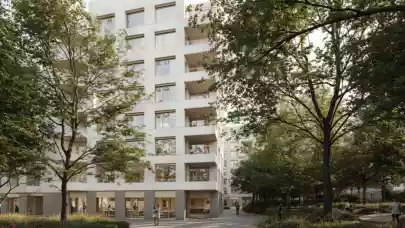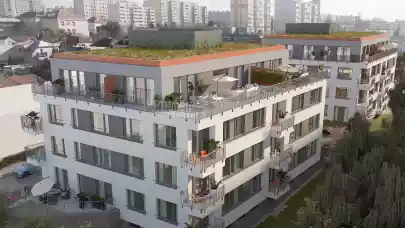
Slovenia is currently grappling with a pressing need for affordable rental housing as demand continues to outpace available supply. Thus, the Minister for Solidarity and the Future, Simon Maljevac, has unveiled an ambitious public policy plan aimed at constructing additional housing units. Dr Aleš Pustovrh, the EECFA’s Slovenian researcher, has delved into the key components of the government's strategy, examining the challenges it faces and the potential impact on the housing landscape in Slovenia.
Housing landscape in Slovenia: growing disparity between demand and supply
Minister Maljevac highlighted a stark reality that Slovenia lags behind the EU and OECD averages in terms of available dwellings per 1000 inhabitants. Statistical data reveals that there are only 410 dwellings per 1000 inhabitants in Slovenia. This shortage has led to a significant impact on housing prices, with an alarming 77% increase in the average price per square meter between 2015 and 2021.
Between 2015 and 2021 the number of households in Slovenia increased by almost 40,000, while only 23,000 new dwellings were constructed during the same period. This stark disparity has intensified the housing crisis, further driving up prices and making home ownership increasingly unattainable for many Slovenians.
Public housing solution: ambitious plan
Minister Maljevac believes that a crucial part of the solution lies in increasing the availability of public housing for non-profit rents. Currently, there are 23,000 such units managed by 13 local or national housing funds. However, the number of these units has remained stagnant due to minimal public investments in recent years: merely €6 million in 2020 and €4 million in 2021. Simultaneously, public expenditure on subsidies for for-profit rents is on the rise with an estimated annual +20%.
To address the housing crisis, the government has committed to building 5,000 new dwellings by 2026, starting with the construction of 1,000 units in 2024. The National Public Housing Fund (NPHS) plays a pivotal role in this plan. The NPHS capital was raised by €25.5 million in 2023 and the same raise is planned for 2024. The NPHS will use these funds to construct its own residential dwellings and offer favourable loans to local and regional public funds or municipalities for their projects. An additional €100 million in loan financing is also sought.
As the government's plans are ambitious, there are concerns about their feasibility. The heavy reliance on public funding raises questions, particularly at a time when there are pressures to reduce public expenditure in Slovenia. The government's dependence on public funding alone may pose a risk to the successful implementation of the plan. To enhance the viability of these plans, the government may need to consider attracting private financing and fostering public-private partnerships. Currently, such partnerships are limited in the Slovenian housing market, but they might become essential to realizing the government's ambitious goals in the face of budget constraints.
EECFA (Eastern European Construction Forecasting Association) conducts research on the construction markets of 8 Eastern European countries, including Slovenia.



